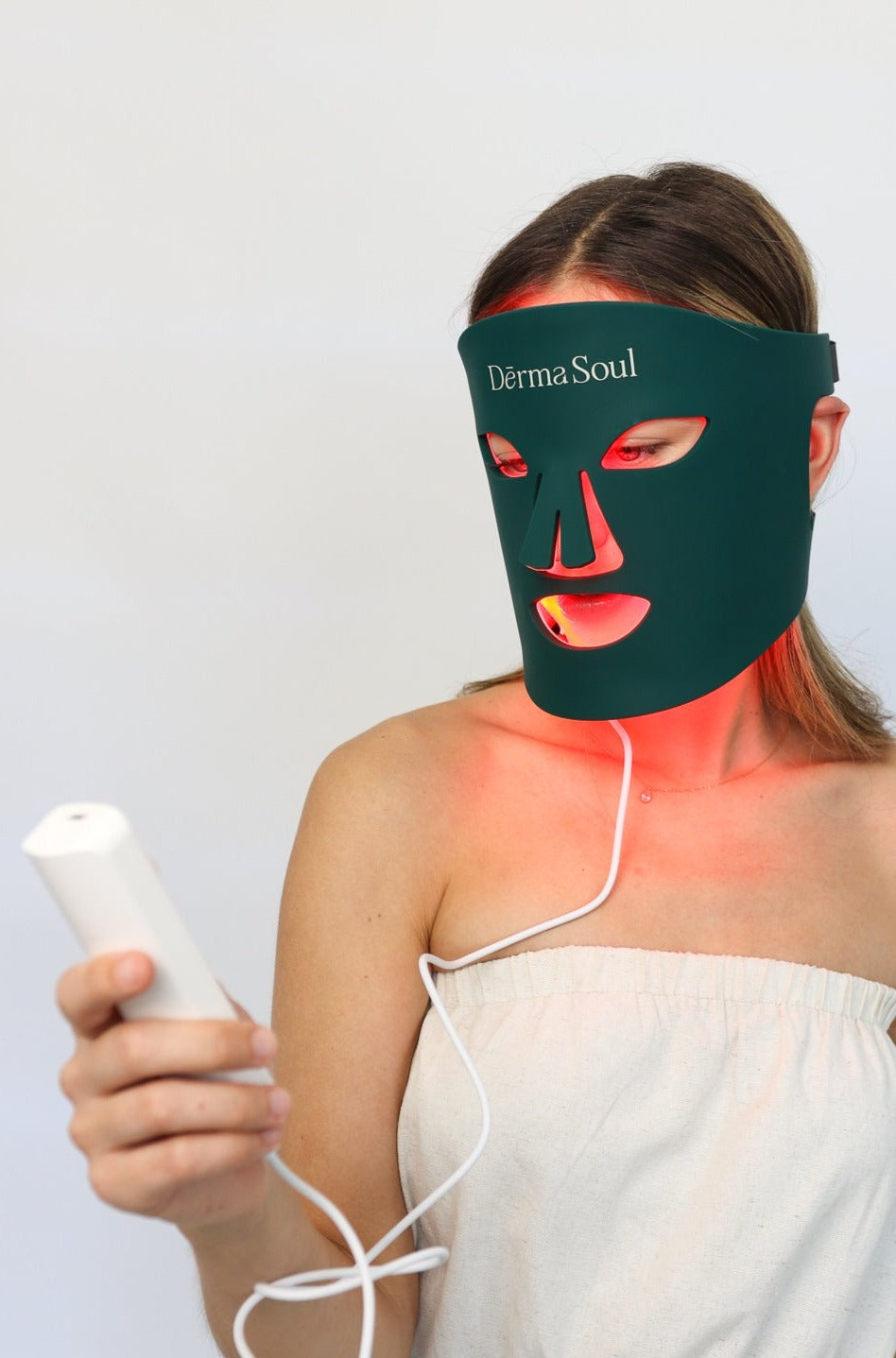Acne, the nemesis of clear skin, has met its match in the evolving world of skincare. LED light therapy, particularly blue light, has gained popularity for its ability to combat acne-causing bacteria. However, there's a strategic approach to harnessing the power of LED light therapy without compromising the skin's natural defences. Let's delve into the best way to use LED light therapy to combat acne while avoiding potential pitfalls.
Understanding Blue Light Therapy:
Blue light, with its wavelength ranging between 415-460nm, has been celebrated for its antibacterial properties. It penetrates the skin's surface and targets the acne-causing bacteria, Propionibacterium acnes, effectively reducing inflammation and breakouts. However, using blue light therapy alone may pose challenges.
Potential Pitfalls of Blue Light Therapy Alone:
Acid Mantle Stripping: The skin's acid mantle is a protective barrier composed of natural oils and acids that maintain skin health. Prolonged exposure to blue light alone may strip this protective layer, leaving the skin vulnerable.
Hyperpigmentation Concerns: Blue light therapy, if not used judiciously, can potentially lead to hyperpigmentation. UV light, with a wavelength of 400nm, is close to the lower end of the blue light spectrum, raising concerns about the risk of pigmentary issues. Furthermore, hyperpigmentation (PIH), is a protective response by the skin when it’s under stress (in example, PIH can usually follow an acne lesion due to the inflamed skin surrounding and beneath the lesion), so is a risk when stripping the healthy oil produced by the skin’s barrier, as the skin will become stressed, dehydrated and it’s pH balance disturbed
The Smart Approach: Combining Blue Light with Other Wavelengths:
To harness the benefits of LED light therapy for acne without compromising skin health, consider a multi-wavelength approach:
Incorporate Red Light Therapy: Red light, with wavelengths around 620-700nm, complements blue light by reducing inflammation and promoting healing. It aids in minimising the risk of hyperpigmentation and supports overall skin rejuvenation. Further, focusing on healing the skin barrier and reducing inflammation has a positive impact on existing acne, and preventing acne formation or aggravating it.
Balance with Yellow Light: Adding wavelengths between 570-590nm (yellow) in the same session, can further enhance the treatment. Yellow light helps soothe the skin, targets hyperpigmentation, swelling, and helps even out skin tone. It does this by increasing the production of red blood cells which is essential in wound healing and skin rejuvenation. Yellow light also boosts serotonin within the brain, the ‘happy’ chemical that communicates with the brain to improve mood, sleep and wound healing!
Mindful Intensity and Duration: Be cautious with the intensity and duration of your LED light therapy sessions. High intensity and prolonged exposure may compromise the skin's protective barrier. Start with shorter sessions and gradually increase intensity as your skin builds tolerance.
Follow a Consistent Routine: Consistency is key. Incorporate LED light therapy into your skincare routine, ideally a few times a week, to experience its cumulative benefits over time.
Tips for Optimal LED Light Therapy Results:
Cleanse Before Use: Ensure your skin is clean and free of makeup or skincare products before starting your LED light therapy session.
Use Quality Devices: Invest in a reputable LED light therapy device with adjustable settings and multiple wavelengths to tailor your treatment.
Moisturise Post-Treatment: Following your LED light therapy session, apply a hydrating and soothing moisturiser to replenish the skin's moisture barrier.
To conclude, have a balanced approach and remember to give your skin a much needed REST! Being consistent with both your skin care routine, light therapy and inner health with diet, hydration and sleep are key differences in winning the battle against acne. It will also ensure your focus is making the skin more resilient with a healthy mind and body!











